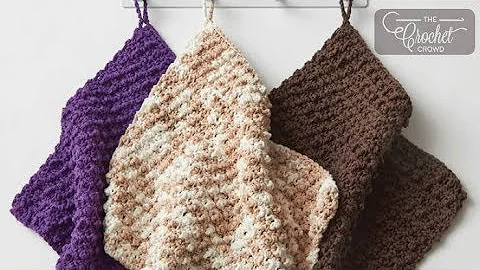Master Left-Handed Crochet: Decode Diagram Patterns & Create Beautiful Stitches
Table of Contents:
- Introduction
- Understanding Crochet Diagrams or Charts
2.1 Basic Crochet Symbols
2.2 Differences Between UK and US Terminology
- The Chain Stitch
3.1 Symbol and Terminology
3.2 Beginning a Project with a Foundation Chain
- The Single Crochet (US) / Double Crochet (UK)
4.1 Symbol and Terminology
4.2 Starting a New Row or Round
- The Half Double Crochet (US) / Half Treble Crochet (UK)
5.1 Symbol and Terminology
5.2 Working the Half Double Crochet
- The Double Crochet (US) / Treble Crochet (UK)
6.1 Symbol and Terminology
6.2 Starting a Row or Round with Double Crochet
- The Treble Crochet (US) / Double Treble Crochet (UK)
7.1 Symbol and Terminology
7.2 Starting a Row or Round with Treble Crochet
- The Double Treble Crochet (US) / Triple Treble Crochet (UK)
8.1 Symbol and Terminology
8.2 Starting a Row or Round with Double Treble Crochet
- The Slip Stitch
9.1 Symbol and Terminology
9.2 Uses of the Slip Stitch
- Reading Crochet Diagrams
10.1 Understanding Color-Coded Diagrams
10.2 Following Row Directions
- Crochet Patterns
11.1 Simple Pattern Example
11.2 Following the Stitch Instructions
- Conclusion
Understanding Crochet Diagrams or Charts
Crochet diagrams or charts are visual representations of crochet patterns. They use symbols to represent different stitches and show the order in which the stitches should be worked. Understanding how to read and interpret these charts is essential for following crochet patterns accurately.
Basic Crochet Symbols
Before diving into reading crochet diagrams, it's important to familiarize yourself with the basic crochet symbols. These symbols are used worldwide, but there may be slight differences in terminology between UK and US crochet terminology. It's essential to understand these differences to avoid confusion when following patterns.
The Chain Stitch
The chain stitch is the foundation of most crochet projects. It is represented by an oval-shaped symbol in crochet diagrams. To begin a project, you will need to create a foundation chain using the chain stitch. The number of chain stitches required will vary depending on the pattern's instructions.
Symbol and Terminology
The standard symbol for the chain stitch is an oval shape. In UK terminology, it is called "chain," while in US terminology, it is called "ch." Designers or companies may use slightly different symbols in their patterns, but they will always specify the symbols and abbreviations used.
Beginning a Project with a Foundation Chain
To start a new row or round, you will need to chain one and then work one single crochet (US) or double crochet (UK) stitch into the second stitch from the hook. This first stitch is often referred to as the 'turning chain.' From there, you can continue working the pattern as directed.
The Single Crochet (US) / Double Crochet (UK)
The single crochet stitch (US) or double crochet stitch (UK) is one of the most commonly used stitches in crochet. It is represented by a plus or cross symbol in crochet diagrams. Understanding how to work this stitch and its variations is crucial for following crochet patterns effectively.
Symbol and Terminology
The symbol for the single crochet (US) or double crochet (UK) is a plus or cross shape. In UK terminology, it is called "double crochet," while in US terminology, it is called "sc." It's essential to pay attention to the terminology used in the pattern instructions to ensure accuracy while working.
Starting a New Row or Round
When starting a new row or round with a single crochet (US) or double crochet (UK) stitch, you will need to chain one and work the designated stitch into the second stitch from the hook. This turning chain helps maintain the correct stitch height and creates a neat edge for your project.
Continued...
 WHY YOU SHOULD CHOOSE BEAUTYBADY
WHY YOU SHOULD CHOOSE BEAUTYBADY







